
The second largest waterfall in the United States is located between West Linn and Oregon City, Oregon (pictured here circa 1918). The spectacular horseshoe-shaped cascade of water is called Willamette Falls, and it’s pretty inaccessible, hidden from public view by mills on both sides of the Willamette River.
In fact, the base of the falls has been cut off from the public for more than a century.
The owner of the site adjacent to the falls on the Oregon City side of the river, the Blue Heron Paper Company, has gone out of business and the valuable acreage is now in bankruptcy proceedings, to be auctioned off later this month.
This industrial parcel has the potential to be a game changer for the area, becoming a huge tourist destination as well as a park amenity for Oregon City residents. If it were successfully repurposed, it would further catalyze the rapid improvement that has been happening in the historic core of downtown Oregon City, one of the West’s oldest cities.
I recently had the pleasure of touring the site and was surprised to learn several things.
-
Downtown used to extend 4 blocks into the existing mill acerage. As the core of Oregon City declined, the mill began taking over the downtown, block after block. I shudder to think of the amazing buildings that were lost in the mill expansion over the years.
-
There are old basalt foundations that date back to the original uses on the site, perhaps from the mid to late 1800s. It has the feel of archeological ruins with the vestiges of these buildings besprinkled around the site. It is entrancing. These stone fragments are shown in the first row of photos at the bottom of this page. (Please click to enlarge.)
-
Some of the site is on pilings. It will certainly make developing the old mill more complex, as no one specifically knows how healthy the pilings are. This is added to the more traditional waterfront redevelopment hurdles of multi-jurisdictional involvement from federal, state, and local government agencies. And the industrial hurdles, such as environmental abatement. Throw in the fact that you have PGE-owned electricity generation and, yowza, you’ve got a big mess that will require patience, capital, and a deft touch to sort through.
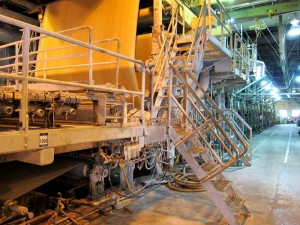

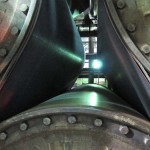 During our walkabout of the site, I was particularly enthralled with a huge paper machine that was built-in-place by a Wisconsin firm in the 1920s. It was used to produce extremely large rolls of low quality newsprint. It is gigantic and mesmerizing, with analog controls that practically itched to be twisted, flipped, and turned. The drums were gorgeous.
During our walkabout of the site, I was particularly enthralled with a huge paper machine that was built-in-place by a Wisconsin firm in the 1920s. It was used to produce extremely large rolls of low quality newsprint. It is gigantic and mesmerizing, with analog controls that practically itched to be twisted, flipped, and turned. The drums were gorgeous.
Metro, a regional governing entity, will be putting in a bid for the site, which delights me tremendously because I believe they would have the ability to balance private development goals with appropriate public stewardship of access to the falls. It is a rare gem of a site that abuts a natural water feature that should be a national treasure, open to everyone. It is fascinating to me that so few people in the region even know that we are sitting on such a rare and valuable natural resource.
This is definitely an auction to watch. Many are eagerly awaiting to see what unfolds, including me!
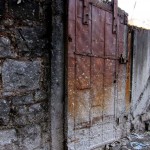
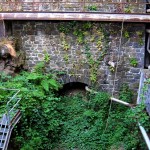

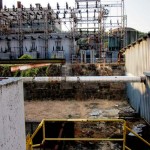
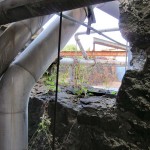
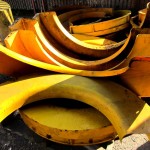
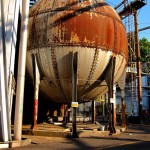
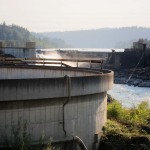
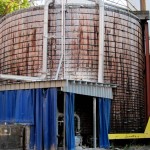
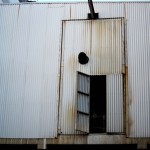
{ 2 comments… read them below or add one }
Great pictures. I use to work there allot of history within that mill site.
Joshua, mil danke for the nice comments on the photos. It is a visually arresting place, I wanted to desert my tour and stay all day exploring and photographing! The layers of history were a surprise to me, as I didn’t know the site had a history prior to the mill.